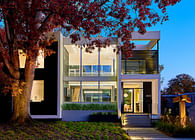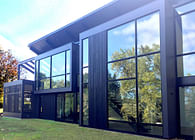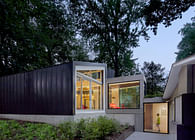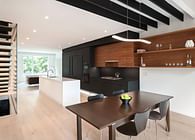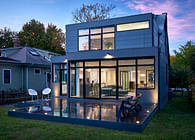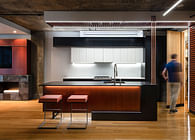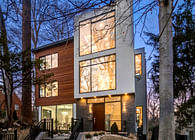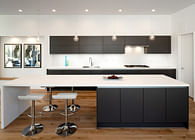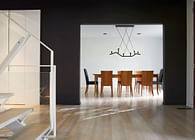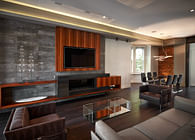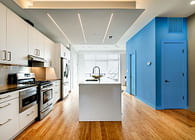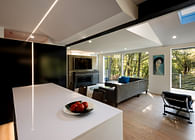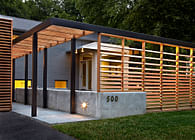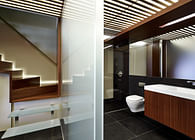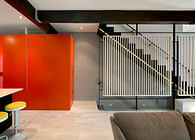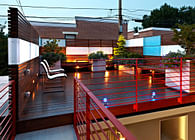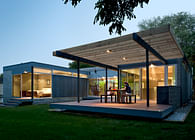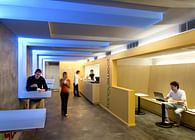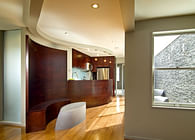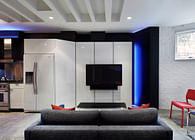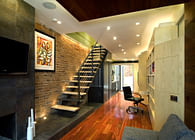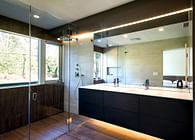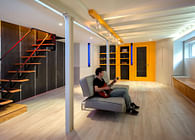
Washington, DC
Architecture tells stories. The façade of this new 4-unit condominium building in Washington DC frames scenes from the residents’ lives, through full-height glass bays that project at varying angles. Located in an up-and-coming neighborhood, the design reinvents the “traditional” rowhouse, showcasing a prototype concept for future development.
The new building adopts the “typical” rowhouse width, since it is composed of two separate lots divided in half by a fire-rated party wall. However, the entry facade does not adopt this rhythm - rather it presents the building as a unified whole to the street, offering a new way of addressing this building type.
The angled glass bays project from the front facade, activating the space between private and public -living room and street. These reinvented rowhouse bays challenge the design of traditional bay windows. Their proportions are similar, however, they operate independent from each other. The thin floor plate allows for a vertical separation, supported by a steel frame that also provides lateral bracing for the front facade.
Standard row houses fill the width of the site, requiring that entry be directly off the street (usually into the living room). Storyboard creates private side “alleys” for entry into the middle of the units. This allows for an entry/stair hall separate from the living spaces, leaving front and back of units open for large windows and without the interference of circulation. The private alleys also provide security from the street and serve as egress for interior bedrooms. Finally, by opening up the center of the rowhouse, large glass walls are created in the middle of the units This addresses the common problem of rowhouses being dark in the middle, as this central glass illuminates the most interior spaces. Finally, the upper units have large roof decks, with a panoramic view of the city, including the US Capitol building and Washington Cathedral. Lower level units have a patio set slightly below grade as an urban outdoor space. Parking is provided off the rear alley.
This developing neighborhood is popular with young couples and families, as it is near the metro, and walkable to restaurants and shops. Sustainable elements include solar panels on the roof, highefficiency mechanical units, tankless hot water heaters, LED lighting, and sustainable materials. Shou sugi ban siding brings warmth and texture to the entry alleys.
photography: Anice Hoachlander
developer/contractor : Warmington-Oppenheim Development
Status: Built
Location: Washington, DC, US
Firm Role: Architects
